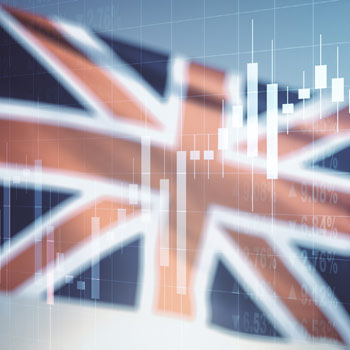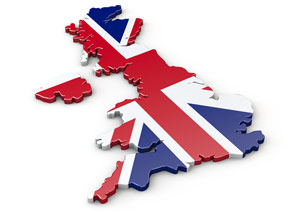
What should I know before investing and trading in the FTSE 100 index?
We shall initially take a few moments to summarise what exactly the FTSE 100 represents and how it operates.
Concerning its general definition, the FTSE 100, commonly known as the Footsie, is a stock market index that integrates, as indicated by its name, the top 100 companies quoted on the London Stock Exchange, or LSE, in terms of stock market capital.
As we mentioned briefly earlier in the introduction, this index is managed by the FTSE Group and the rate is updated every 15 seconds. Its quotation is of course updated during the trading hours of the London Stock Exchange, this is between 8 a.m. and 4.30 p.m., English time.
To better understand the operation of the FTSE 100 stock market index we can compare this, in its manner of operation, to certain American stock market indices such as the S&P 500 or the Dow Jones 30. This means that the rate of this index is calculated in the same way which is through the total stock market capital of the 100 companies of which it is composed. To summarise, this means that when the rate of this index rises this indicates that the total value of the companies of which it is composed has risen even though maybe the share capital of all the individual companies may have not. And, to the contrary, if we note a fall in the rate of the FTSE 100 this means that the overall capital of all the companies that compose it has fallen, not that all the individual companies have experienced a drop in their stock market capital.
Movements in the FTSE 100 rate are frequent and sometimes highly volatile. To comprehend the extent of this you simply need to examine a monthly stock market chart of this stock market index available through any reputable online broker. This high volatility calls for extreme prudence if you plan to speculate on this rate. As we shall examine in more detail later on, anticipating the rising or falling movements of this stock market index of course depends on the correct anticipation of a rise or fall in the stock market capital of the companies quoted in this index.
Trade the FTSE 100!{etoroCFDrisk}% of retail CFD accounts lose money - etoro.com
How do I trade the FTSE 100?
There are several ways of investing in the FTSE 100, each with its advantages and disadvantages.
Investing directly in FTSE 100 stocks
This method involves buying individual stocks in the companies that make up the FTSE 100 index. Investors can select specific companies such as BP, HSBC Holdings or GlaxoSmithKline and buy them via an online trading platform or bank.
The major advantage of this approach is the ability to choose which companies to invest in, which can be beneficial for those who have a particular conviction about certain companies. However, this method also involves risks. The performance of individual companies can vary considerably depending on company-specific factors such as financial results, management and sectoral market conditions.
Investing in FTSE 100 index funds or ETFs
FTSE 100 index funds invest in all the companies making up the index.
For example, the iShares Core FTSE 100 UCITS ETF allows investors to buy a share of a diversified portfolio representing the entire FTSE 100 market.
This provides broad, diversified exposure to the UK stock market without having to choose individual stocks. In addition, the management costs of index funds are generally low, making them attractive to fee-conscious investors.
However, index funds are also subject to market fluctuations, and the performance of the portfolio as a whole will depend on the overall performance of the stock market.
Trading the FTSE 100 with CFDs
CFDs (Contracts for Difference) on the FTSE 100 allow traders to speculate on the price movement of the index without having to physically own the underlying stocks. This method offers significant flexibility, as traders can open long or short positions depending on their expectations of the price movement.
In addition, CFDs generally offer leverage, which means that traders can invest a larger amount than their initial capital, potentially increasing both gains and losses. However, it is important to note that CFDs are complex and risky financial instruments, and a thorough understanding of the financial markets and rigorous risk management are required to succeed in this type of trading.
Trade the FTSE 100!{etoroCFDrisk}% of retail CFD accounts lose money - etoro.com
What is the current composition of the FTSE 100 stock market index?
Given that analysing the price of the FTSE 100 index involves detecting factors that can increase or decrease the capitalisation of the companies that make it up, it is necessary to have an excellent knowledge of this composition. That's what we're going to look at next.
As with all global indices, the composition of this index changes over time. Since it was first listed in 1984, the FTSE 100 stock market index has seen its list of constituent companies evolve in line with increases or decreases in market capitalisation, or following specific events such as mergers and acquisitions.
Another important point to note about the composition of the FTSE 100 is that not all the companies represented in it are British. This is not a requirement, as a company simply has to be listed on the London Stock Exchange to be eligible for inclusion. However, many of the companies currently listed on the London Stock Exchange are in fact companies based abroad, which generate a large proportion of their revenues abroad.
Given that this stock market index is made up of 100 stocks, we are not going to give you a complete list of the companies that make up the index, which you can easily find on specialist websites or on your broker's platform. However, here is a look at the top 40 stocks in this index in 2024 in terms of market capitalisation:
- Royal Dutch Shell - Oil & Gas
- BP - Oil & Gas
- Vodafone Group - Telecommunications
- HSBC - Banking
- GlaxoSmithKline - Pharmaceuticals
- AstraZeneca - Pharmaceuticals
- British American Tobacco - Tobacco
- BG Group - Oil and Gas
- Tesco - Retail
- BHP Billiton - Mining
- Diageo - Brewing
- Unilever - Consumer products
- Imperial Tobacco Group - Tobacco
- Reckitt Benckiser - Consumer goods
- Sablier - Brewing
- Anglo American - Mining
- Standard Chartered - Banking
- National Grid - Energy
- Rio Tinto Group - Mining
- Lloyds TSB - Banking
- BAE Systems - Armaments
- Centrica - Energy
- Scottish and Southern Energy - Energy
- Barclays - Banking
- Royal Bank of Scotland - Banking
- British Sky Broadcasting - Multimedia
- Prudential - Insurance
- Aviva - Insurance
- British Energy - Energy
- BT Group - Telecommunications
- Cadbury - Food
- Morrisons - Retail
- Compass Group - Catering
- Rolls-Royce - Armaments and heavy engineering
- Sainsbury's - Retail
- Reed Elsevier - Multimedia
- Shire - Pharmaceuticals
- Xstrata - Mining
- Tullow Oil - Oil & Gas
- Pearson - Multimedia
- Associated British Foods - Food
Of course, as indicated above, this composition is likely to change over time, so we invite you to check the stocks that make up the FTSE 100 index in real time.
Trade the FTSE 100!{etoroCFDrisk}% of retail CFD accounts lose money - etoro.com
Which factors influence the rate of the FTSE 100 stock market index?
Of course, and as is the case with other stock markets and their indices worldwide, the two major factors that can particularly influence the rate of the FTSE 100 are economical and political.
Given that this index tends to reflect the British economy and its health, we can generally note a rise in its rate during periods of the country’s economic growth, and a fall during times of recession. But even so, the situation is not as simple as that and other exterior factors can intervene and influence this asset’s rate.
It is also necessary to complete a fundamental analysis taking into account the economic and political indicators that we will detail later, as well as a comprehensive technical analysis without ignoring the market psychology.
It should also be noted that there is a relative correlation between the American stock market indices and other worldwide indices and that a rise or fall in the major U.S. indices can therefore exert an influence on other indices such as the FTSE 100.
How to complete a technical analysis of the FTSE 100 rate:
A study of the stock market charts is of course extremely important if you plan to examine the FTSE 100 rate and its possible future movements. This is what we call a technical analysis.
This technical analysis therefore consists of studying the rates and historical movements of an asset in order to detect the configurations that enable the prediction of a rise or fall in the price or rate or an acceleration or reversal of a trend. For this it is notably important to take into account various factors including the market volatility, the direction of a trend and the fluidity.
The technical analysts or chart experts use technical indicators for this. These are the fine calculations created by economists and analysts with the objective of obtaining trading signals. Although these signals are not 100% reliable and are more representative of statistics and probabilities they are still highly popular with the investors.
Among the most used indicators for a technical analysis we note the Bollinger bands, the MACD, the Fibonacci lines, the moving averages, the pivot points and the support and resistance levels. With the majority of the online brokers it is not necessary to complete the calculations yourself as you can simply display them on the charts provided. It is however still necessary that you know how to interpret the indicators correctly.


